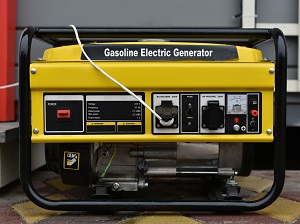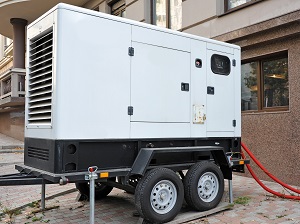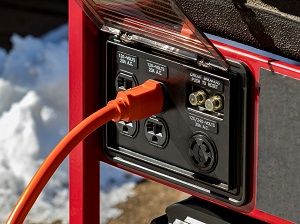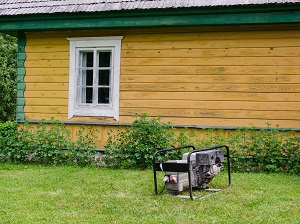Portable generators are internal combustion engines used to generate electricity. They are useful when temporary or remote power is needed, but portable generator usage comes with risks that can be very dangerous if safety precautions are not followed.

When portable generators are used on the job, the major causes of injuries and deaths include shocks and electrocution from improper use as well as shocks and electrocution to utility workers from improper connection to structures, such as residences, offices, shops, and trailers.
The hazards associated with portable generators are:
- Shocks and electrocution from improper use of power or accidentally energizing other electrical systems.
- Carbon monoxide from a generator’s exhaust.
- Fires from improperly refueling a generator or inappropriately storing the fuel for a generator.
- Noise and vibration hazards.

The electricity created by generators has the same hazards as normal utility-supplied electricity, but it also has some additional hazards if generator users bypass the safety devices, like circuit breakers, that are built into electrical systems.
Never attach a generator directly to the electrical system of a structure, like a home, office, or trailer, unless the generator has a properly installed open-transition transfer switch. Attaching a generator directly to a building electrical system without a properly installed transfer switch can energize wiring systems for great distances. This creates a risk of electrocution for utility workers and others in the area.
Always plug electrical equipment directly into the generator using the manufacturer’s supplied cords or extension cords that are grounded (3-pronged). Never use frayed or damaged extension cords. Do not overload a generator. This can lead to overheating which can create a fire hazard.
Make sure a generator is properly grounded and the grounding connections are tight. Proper grounding and bonding are a means to prevent shocks and electrocutions. Consult the manufacturer’s instructions for proper grounding methods.

Carbon monoxide (CO) is a colorless, odorless, toxic gas. Many people have died from CO poisoning because their generator was not adequately ventilated.
Never use a generator indoors or in enclosed spaces such as garages, crawl spaces, and basements. Open windows and doors may not be enough to prevent CO from building up when a generator is located in an enclosed space. Do not use a generator outdoors if its placement near doors, windows, and vents could allow CO to enter and build up in occupied spaces.
Ensure carbon monoxide detectors are used when fuel-burning generators are running, and employees are located at indoor and/or partially enclosed work sites.
If you or anyone nearby begin to show symptoms of CO poisoning including dizziness, headaches, nausea, or tiredness, get to fresh air immediately and seek medical attention. Do not re-enter the area until it is determined to be safe by trained and properly equipped personnel.

Generators become hot while running and remain hot for long periods after they are stopped. Fuels used in portable generators, like gasoline or kerosene, can ignite when spilled on hot engine parts.
Before refueling, shut down the generator and allow it to cool. Gasoline and other generator fuels should be stored and transported in approved containers that are properly designed, labeled, and vented. Keep fuel containers away from flame producing and heat generating devices like the generator itself, water heaters, cigarettes, lighters, and matches. Do not smoke around the fuel containers.
Generator engines vibrate and can be loud. Excessive noise and vibration may cause hearing loss and fatigue that may affect job performance. Keep portable generators as far away as possible from work areas and gathering spaces. Wear hearing protection if needed. Power off and do not use any electrical equipment that has strange odors or begins smoking.

Additional safety precautions to keep in mind when operating a portable generator:
Maintain and operate portable generators in accordance with the manufacturer’s use and safety instructions. Visually inspect the portable generator and electrical equipment before use. Remove defective equipment from service and mark or tag it as unsafe for use.
Use ground fault circuit interrupters (GFCIs), especially where electrical equipment is used in or around wet or damp locations. Keep portable generators dry and do not use in rainy or wet conditions. If needed, protect a generator with a canopy. Never manipulate a generator’s electrical components if you are wet or standing in water.


